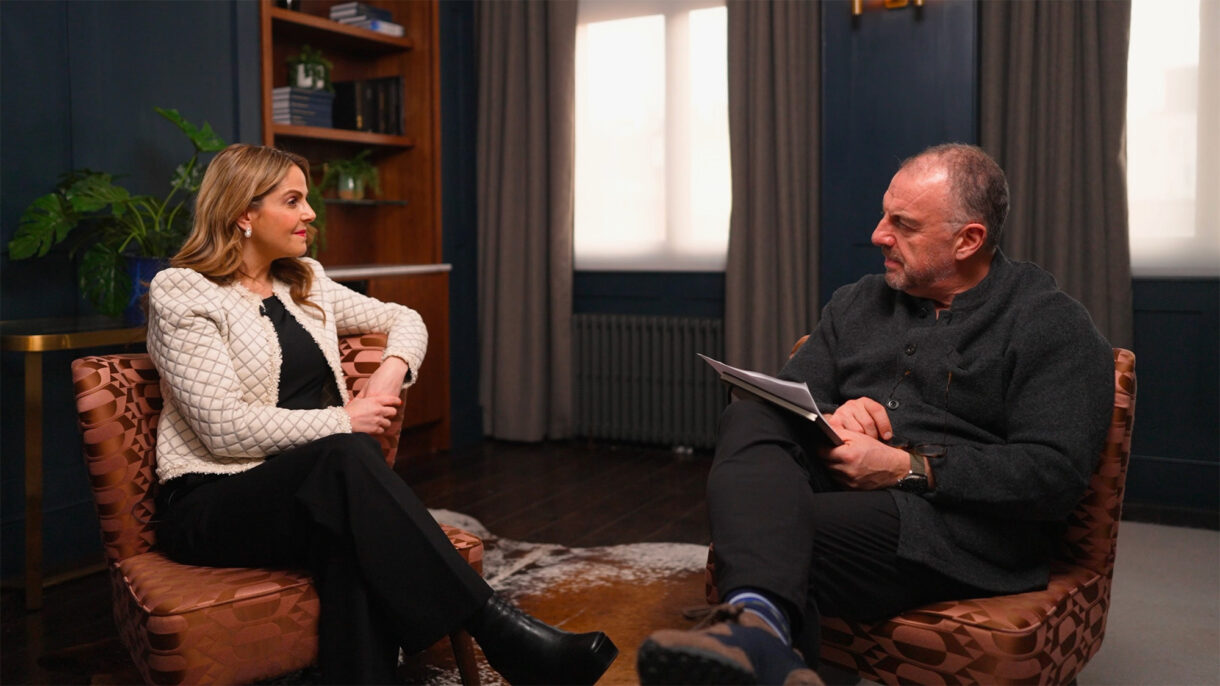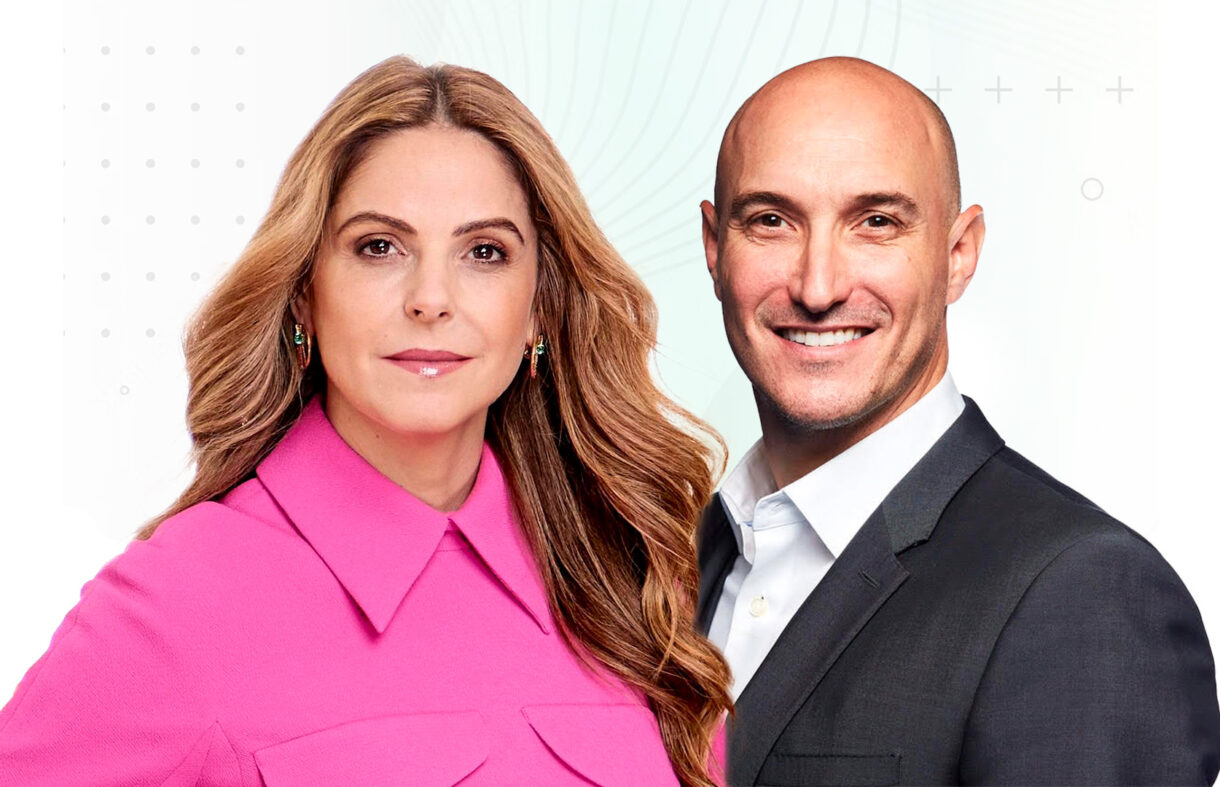WHITE PAPER
DR LUIS HUETE – Professor at IESE Business School, Oxford Leadership Partner
ANA ISABEL MERINO – Executive and Team Coach
A person’s leadership can be seen in the quality of the relationships he or she generates.
The quality of the relationships, in turn, is conditioned by the quality of the conversations: by their sincerity, by their depth, by the way they look at the other person. It can be deduced that leadership and quality conversations are two mutually reinforcing realities.
In the professional arena, relationships are also very much determined by the type of conversations we have with our colleagues. If interactions are reduced to discussions or negotiations, it is clear that it will be difficult to face the daily routine with positive energy. We need more conversations and less discussions. Real conversations in which both parties, with professionalism and respect, freely express their points of view with the aim of understanding each other.
It is interesting to see how the etymology of the two words shows the difference between them. On the one hand, dialogue, which comes from the Greek words dia (through) and logos (word); hence we understand dialogue as a conversation
in which meaning flows through the exchange of positions between interlocutors seeking mutual understanding.
Discussion, however, comes from the Latin discutere. The ancient Romans shook plants to separate the roots from the soil and check if they were solid. Roman emperors used this term in a military sense to refer to the moment when
they breached an enemy wall. When arguing, one seeks in some way to “shake” the other’s words and argue reasons against his or her opinion.
The current times of increasing change and complexity demand a higher quality in the interdependent relationships between one another. We cannot act as isolated and self-sufficient subjects. We need to consider our greater interdependence, and a dialogue that generates mutual respect and trust helps us to do so. Real conversation is a powerful combination of listening and self-expression, and an essential means of developing a culture of collaboration.
This article discusses the challenge of improving conversations by describing a set of recommendations to enhance their quality, the main barriers that block dialogue, tools to address these barriers, and a consideration of the impact of conversations on health. The paper ends with some conclusions.
Recommendations for a good conversation.
For a conversation to take place, first of all we need a “you” that participates in equal measure with an “I”. In other words, the conversation always takes place with someone. It is an exchange in which two or more think and discover together. A good conversation is always creative and requires an attitude of
openness. If the exchange is authentic, a bond is established in which the interlocutors influence each other.The British philosopher Paul Grice, known for his contributions to the philosophy of language in the field of communication,
formulated the so-called Cooperative Principle in this way: “Make your contribution to the conversation be, at each moment, that required by the purpose or direction of the communicative exchange in which you are engaged.” In other words, this principle assumes a tacit agreement of collaboration in all those who participate in a conversation.
Derived from this principle, he defined several maxims, as general rules for any conversation, whose compliance is usually taken for granted by those who engage in dialogue. These are presented below as recommendations connected to each other as a means of improving the quality of conversations:
- Quantity of content. This means learning to give the amount of information strictly necessary for each occasion, no more and no less, depending on the people, the context, or the situation. Intervene when the information provided is key and remain silent when it is not.
– - Quality of content. This is governed by the maxim of making a real contribution. This means making interesting contributions that are well founded and that one knows are not false or confusing. Relevance to the situation. This consists of making contributions that add value and are relevant to the situation, without deviating from the topic.
– - Relevance to the situation. This consists of making contributions that add value and are relevant to the situation, without deviating from the topic.
– - Clarity of exposition. This element points more to the way in which something is said. The form will be adequate when one speaks clearly, being concise, orderly and unambiguous. Regarding brevity, it is worth remembering Pascal’s words: “This letter is very long, simply because I have not had time to make it shorter”.
Make your contribution to the conversation be, at each moment, that required by the purpose or direction of the communicative exchange in which you are engaged.
Presence could be considered the “golden rule” for the quality of a conversation. If we need a “you” and an “I” to make dialogue possible, it would be of little use if one or both were absent. One communicates with true authenticity when one is present with the body, with the emotions, with the mind and with the spirit; and also, when the four dimensions are in harmony, that is, there is no incongruence in the message that is communicated through each one of them. Everything counts.

Barriers to good conversation.
For some people, especially in professional and business environments, it is common to generate debates or discussions. In both cases, people often seek to impose their own opinion. and interests, or to prove that they have the right answer. Many become fixated on the aspect that is most relevant to them, making it difficult to move the conversation forward.
This type of posture, which, among other things, becomes a barrier to dialogue, leads to unproductive meetings in which, despite their long duration, hardly any value is contributed, or progress is made.
We are often unaware of how these barriers interfere in a conversation. However, experience shows that they do so on two levels, both in the what (they interrupt the flow of the content of the conversation) and in the who (they erode the emotional bond between the people who are talking).
George Kohlrieser, internationally known for his role as a hostage negotiator in countries at war or critical conflict situations, recommends that professional negotiators avoid at all costs the use of barriers to successfully resolve their mission. The bond is strengthened by dialogue and broken by barriers. A negotiator who breaks the bond with the hostage-taker has failed in his objective. This professor of leadership at the IMD business school points out a series of primary and secondary barriers that every leader should know how to manage so that they do not dilute the beneficial effect of a good
conversation.
Four basic barriers to effective conversation:
- Discounting. One person in the conversation says something minimizing or maximizing some element in a way that disrespects or demeans another. Sometimes it is more subtle and sometimes the language can become aggressive. The sharp use of “yes, but …”, so frequent in our conversations, cancels what has been previously said and predisposes to the breakdown of the dialogue.
– - Passivity. A “withdrawal” language is used or simply demonstrated by behavior. The person decides not to intervene, not to get involved and to remain silent in the face of what he/she perceives as a threat in the language of the other. The objective of this posture would be to withdraw, instead of getting involved in the search for a solution to the problem.
– - Redefining. This involves the intention to manipulate, changing the focus of a conversation when the possibility of it becoming uncomfortable or overly emotional is on the horizon. It may be a defense mechanism. There is then a tendency for both to circle back and forth on the issues, or to have a kind of side conversation because the focus has been lost, without making progress toward a conclusion.
– - Over-detailing. The dialogue does not progress because one of the interlocutors gives too much detail, overwhelming the listener with too much information, an losing sight of the central or most important point. There are managers, for example, who include countless slides in their presentations, with an infinite number of details (too many for their interlocutor to retain them or to minimally understand their meaning).
In addition, there are six secondary barriers to effective conversation that may or may not occur in addition to one of the four basic ones mentioned above:
- Being too rational. The conversation is too analytical, without personal warmth, emotion, or human closeness of any kind. Overly simplistic reactions to more emotional or personal issues are included. This lack of empathy inhibits our interlocutor’s capacity for dialogue.
– - Being too emotional. If one allows oneself to be invaded by strong emotions (anger, fear, sadness, envy), one loses control over what one is saying, and stops thinking clearly. Under the effects of that strong emotion, things can be said or done that are regretted once calm is regained. Strong emotions, especially negative ones, steal intelligence.
– - Over-generalizing. A part of reality is taken and exaggerated to absurd extremes. It involves, for example, developing taboos by stating general principles instead of going to the facts, or avoiding issues by remaining in generalities without addressing the particular issue. The use of the terms “all”, “always” or “never” is abused in these cases.
– - Abstraction. The conversation rises too high above the subject under discussion. In these cases, one tends to fall into byzantine discussions that greatly hinder the possibility of connection between the people in dialogue. On other occasions, the indiscriminate use of slang or technical jargon can provoke a certain distance in those who are not so familiar with such specific vocabulary.
– - Lack of directness. Avoid approaching an uncomfortable subject or problem by getting into an awkward situation, or talking about any other subject that intentionally distracts our interlocutor from the core of the conversation.
– - Lack of honesty. At least one of the interlocutors hides his true face, his reasons, or motivations. The consequence is lack of authenticity. And it is impossible to maintain an open dialogue when lies are present.
Tools for overcoming barriers in team
discussions.
The use of barriers in conversations is generally a habit learned more or less consciously. Therefore, it is not easy to reverse it, and we need to unlearn it to communicate more clearly and effectively. With our language, verbal or not, we have the ability to both block and boost our creativity, and our relationships with others.
It is important for managers to develop skills to detect the appearance or manifestation of barriers to dialogue in their teams.
In the long-distance race to learn how to communicate effectively, we have some practical and easy-to-use tools to accelerate this process:
- The red card game. As if it were a soccer match with referee included, the team goes to work meetings with red cards. Every time one of those present ostensibly uses a barrier to dialogue, he or she receives a red card from anyone present. This helps everyone learn to be more aware of the language they use.
– - The “yes, but…” game. To gradually change the unconscious language that sometimes blocks dialogue, one of the possible ways is to eliminate the expression “yes, but…” from our language. Because, we know it well, it means exactly the opposite: we use it to say in an underhanded way that we do not care about what was argued before the “but”. We override the comment someone else has previously made and present our own point of view. If we were to experiment by having everyone in a conversation start their interventions with this crutch, we would see how impossible it is to reach an agreement to make a decision. This practice is intended to inculcate a different way of speaking, one that does not dismiss other people’s arguments out of hand and therefore generates more mutual respect.
– - The “yes, and also …” game. This is the opposite expression to the one mentioned in the previous point, and presupposes a constructive attitude as opposed to the destructive “yes, but…”. It requires listening to understand and build on the point that another has made. Sometimes it will be a simple “yes”. The conversation then flows naturally, the positive energy in the team is noticeable and it is more feasible to reach agreements or conclusions. Sometimes it will be clarifying to explain what in particular is agreed and what is not.
– - The four-sentence rule. This is to ensure that each intervention of a team member in a meeting does not exceed four sentences. This practice forces you to think and structure what you want to say before you start speaking. It undoubtedly helps to reduce the time of meetings, to improve their effectiveness, and to favor a more fluid conversation among everyone.
“Our research showed that how you develop your inner state antecedes the practices which lead to successful outer change. The quality of all of your action comes from this inner place” (Deborah Rowland, 2017)

The impact of dialogue on health.
If it is clear that dialogue has a crucial impact on our relational dimension, numerous studies have also demonstrated its impact on the psychological and physiological level.
The monitoring of patients with heart disease in such day-to-day activities as talking and listening has made it possible to observe the cardiovascular changes that occur. Talking influences blood pressure because it affects the respiratory rate and the depth of breathing. As we inhale and exhale, pressure changes in the chest cavity affect the large blood vessels that return blood to the heart. As we speak our blood pressure, heart rate, and heart rhythm increase, and our body goes into a state of agitation. This effect lasts for several minutes.
The physiological changes produced by stress, and short shallow breathing, associated with a heated discussion will therefore have a toxic effect on health, unlike what happens in our organism when a friendly dialogue is held. It is not the mere fact of emitting sounds that marks a human interaction but above all the emotional aspect involved.
In addition, those who speak very fast are more vulnerable to heart disease because, by not regulating themselves by listening, their cardiovascular rhythm is kept at too high a level (for example, the specific detail of not breathing
deeply when speaking). These same people tend to react more intensely (even violently) in a debate; predisposed by a state of hypertension.
When we are silent and actively listening, however, cardiovascular variables go down and we relax, with the associated corresponding benefits for our health. In fact, these are clear indicators of whether we are really listening.
Biology and psychology have a high social component in us, which is demonstrated in this type of data. It is very healthy and necessary to express emotions, especially if they are negative, through good conversations. The opposite makes you sick. Popular wisdom expresses it with sayings such as ”do not bite off more than you can chew” or “your body speaks your mind”.
It is clear that dialogue has a crucial impact on our relational dimension, numerous studies have also demonstrated its impact on the psychological and physiological level.
On the other hand, hormones such as oxytocin and cortisol influence the way we talk to each other. Therefore, knowing how they work can help us to better manage how we relate to each other. Worry or fear activates cortisol, the stress
hormone. Under its effects, it is more likely to argue than to dialogue, because the state of alertness makes empathy difficult and predisposes us to confrontation. Physical exercise or a healthy diet help regulate this hormone.
Oxytocin, however, known as the happiness hormone, generates greater empathy. It is activated by the experience of a bond, a hug, a look of appreciation, a good conversation, etc.
Conclusions
Of all the interactions that can occur between two people, conversation is one of the most challenging and satisfying. We should reserve space in our schedules to rediscover the joy of a good conversation, and its effect on strengthening personal bonds, both at work and in a more personal setting. The list of pending
conversations should tend to be kept at zero.
A real conversation requires, and at the same time makes possible, a certain empathy and the psychological safety of being able to express what one feels and thinks. When either of these elements is absent, the conversation becomes a confrontation, an act of cynicism, or a comedy of interests.
Numerous studies have confirmed that the quality of our conversations has an impact on our physical and psychological state. At the same time, by learning to manage our biology and psychology more consciously, we can be better able to have good conversations.
A conversation has the potential for personal enrichment as everyone expresses their own perceptions and experiences, which are unique and therefore valuable to an attentive observer. To the extent that we apply these and other recommendations, and detect and remove barriers to dialogue, we will be making a breakthrough in the quality of our conversations, and consequently in the quality of our relationships and leadership.
____
References
Grice, H. P. (1975). Logic and Conversation. In Martinich, A.P. (ed). Philosophy of Language. (pp. 165-175) New York, NY: Oxford University Press.
– Blaise, Pascal. Lettres Provinciales, XVI, 1656.
– Kohlrieser, G. Hostage at the Table. 2006.
National Library of Medicine
https://pubmed.ncbi.nlm.nih.gov/1476458/ and https://pubmed.ncbi.nlm.nih.gov/2463975/
Stay up-to-date with our latest news:
Subscribe









